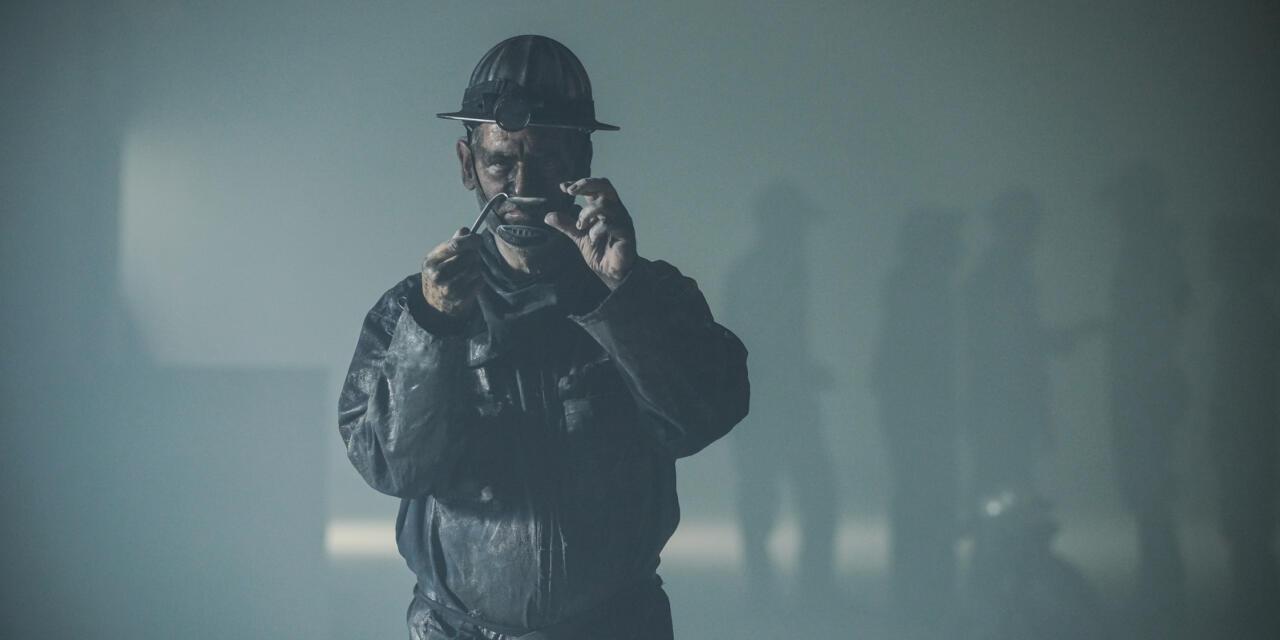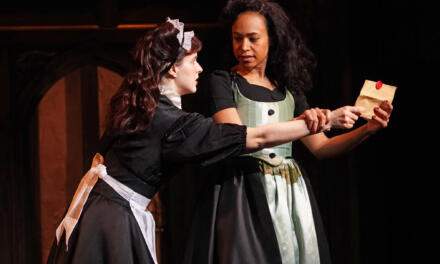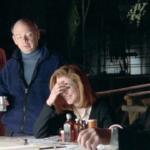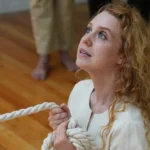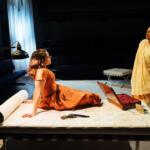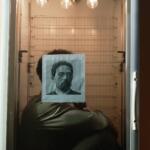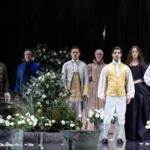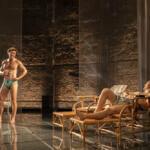Director and writer Romeo Castellucci decided not to use one of the usual venues of the Theatre Biennale for his new work, but chose a very particular site-specific place. The Potato Eaters (I mangiatori di patate), unfolded on the tiny island near Venice’s Lido, called Il Lazzaretto Vecchio (the Old Lepers Hospital). It was in 1423 that the Venetian Senate decided to set up the first ever hospital for people infected by the plague. Over the centuries, the hospital and other buildings on the island have had many uses, including a military base and a dog kennels. In a succinct programme note, Castellucci gives little away about the work’s meaning, but does point to the ‘Lazzaretto’” as the ‘front door’ leading into the production. The work’s title, moreover, recalls Vincent van Gogh’s painting by that name, in which he portrays a family of peasants, eating a frugal meal of potatoes. The lowly, half-lit kitchen and their demeanour reveal their harsh lot. This, one might suppose, could provide another interpretative key as to the themes and atmosphere Castellucci, with dramaturg Piersandra Di Matteo, has explored.
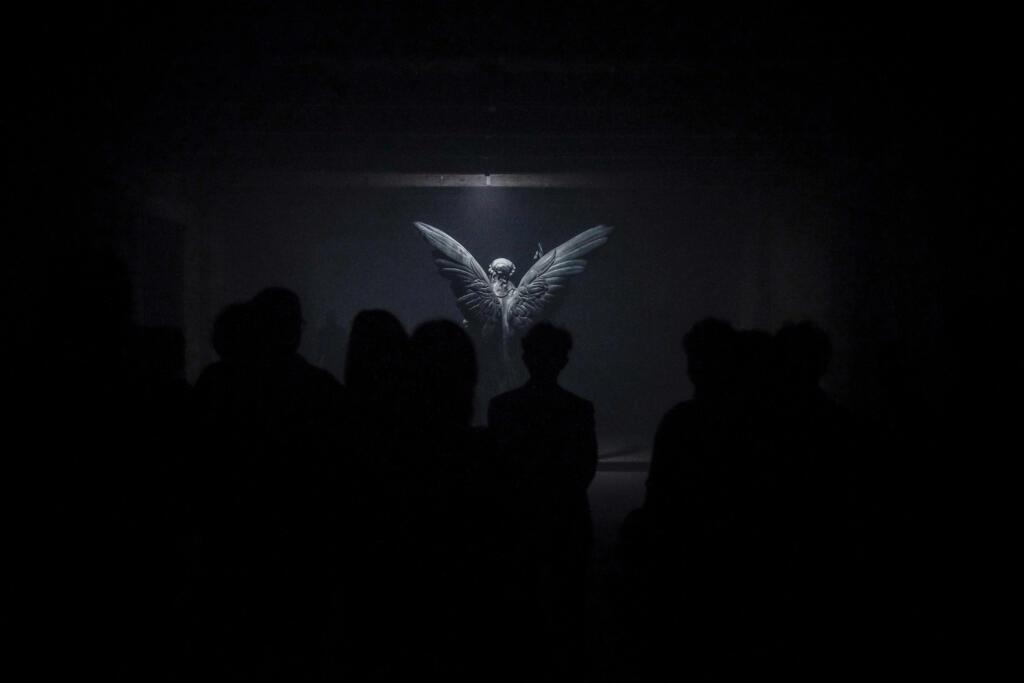
The Potato Eaters [I mangiatori di patate], by Romeo Castellucci. Photo credits: Andrea Avezzù. Courtesy: La Biennale di Venezia.
Having immersed audience members in the setting and atmosphere of this former leprosy hospital, made darker and more sinister by the absence of daylight, Romeo Castellucci offers us a meditation on hardship, poverty and suffering. But not only: mercy and altruism also play a part, if one considers that these men are capable of actors of caring and giving. With respect to the theme of this year’s Biennale: Theatre is Body. Body is Poetry, Castellucci’s work is in perfect sync, since he foregrounds the actor, inviting them to perform in the context of these beautifully honed dramatic actions.

The Potato Eaters [I mangiatori di patate], by Romeo Castellucci. Photo credits: Andrea Avezzù. Courtesy: La Biennale di Venezia.
By: Romeo Castellucci
Music and voices: Scott Gibbons, Oliver Gibbons
Dramaturgy: Piersandra Di Matteo
With: Luca Nava, Sergio Scarlatella, Laura Pante
And with: Vito Ancona, Jacopo Franceschet, Marco Gagliardi, Vittorio Tommasi, Michela Valerio
Technical direction: Eugenio Resta
Sculptures and machines: Plastikart Studio – Amoroso & Zimmermann
Stage technique: Andrei Benchea
Sound technique: Claudio Tortorici
Electric technique: Andrea Sanson
Engineering: Paolo Cavagnolo
Production direction: Benedetta Briglia
Production: Caterina Soranzo
Organization: Giulia Colla
Costumes: Carmen Castellucci, Francesca Di Serio
Technical team in Cesena: Gionni Gardini, Dario Neri
Actors in Cesena: Nicolò Francesco Russo, Mattia Bartoletti Stella
Administration: Michela Medri, Elisa Bruno, Simona Barducci
Economy: Massimiliano Coli
Production: Socìetas
Co-production: La Biennale di Venezia
This post was written by the author in their personal capacity.The opinions expressed in this article are the author’s own and do not reflect the view of The Theatre Times, their staff or collaborators.
This post was written by Margaret Rose.
The views expressed here belong to the author and do not necessarily reflect our views and opinions.

